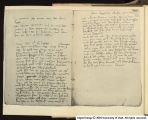| OCR Text |
Show EARL WRITER 7 forms one of the illustrations in Nicolas Desmarets' book on papermaking which s described in this chapter In 1707 there appeared in London a pamphlet which set fort jute as a papermaking materia, the pamphiet being printed upo tided: "An Advantageous Hint: T (<|pmm O(ficcrs S\lpumrgocs, Tmporters of Rice and India Bal Als Grocers, Drapers, Gunpowder Makers, and Pape M1Lm in gumml » The pamp]\\c\ has the following to say relating to jute as a papermaking material: clean.sh data import.tsv out README The paper on which thi is printed is manufactured from an East India article, called Pau or Jute (Crotalaria Juncea, or Paut), there is a small quantity o bleached coloured rags mixed with it . . . The first idea was comMunicated to J. Sewell, of Cornhill, by an ingenious Literary Gentleman, long resident in India, on account of an advertisemen which appeared on the covers of the ‘European Magazine' (Addressed to Ladies, not to destroy their Linen Rags), by J. Sewell No. 32, Cornhill; who takes this method of recommending t Papermakers in general the manufacturing a useful paper (demy crown, or cartridge), for use of Grocers, Chemists, &c. which wil greatly decrease the consumption of rags, and of course the pric of paper The next writer on the subjectof papermaking materials to tak the place of linen and cotton ragswas G. A. Senger who compile What is now an exceedingly rare pamphlet. The essay is printed o Paper tht was made from conferva, a water plant,called by Senge "Water wool." He states that this water wool, or river paper, wa the oldest form of papermaking in nature. This material he terme a coralline product, being the web of water insects, seed capsules D1 i Urkunde d Ppleieiaion nds i ek e Vo 8 20 neuen Papicrstoffen von G. A. Senger, Prediger zu Reck. Dorumund an Leipzig, m 13x19cm Digital Imag © 2004 University of Utah. All rights reserved |



































































































































































































































































































































































































